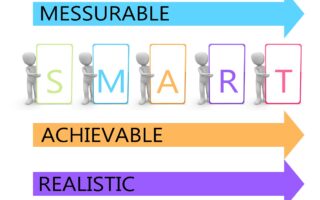Welcome, new runners! Embarking on your running journey can be both exciting and challenging. With the right guidance and a solid training program, you’ll soon find yourself crossing that finish line with ease.
In this article, we’ll look at how to initiate your running experience as well as setting realistic objectives for steady growth. We will also delve into tracking your progress effectively so you can see tangible results from your efforts.
Finally, staying motivated is crucial for new runners to maintain consistency in their routine. We will share tips and strategies to keep you inspired throughout your running journey.
Quick Navigation
1. Get Started
Welcome to the world of running. As a novice to the running scene, you could be pondering how to embark on your trek towards becoming an established and assured runner. In this section, we’ll provide some essential tips for getting started on the right foot.
Choose the Right Gear
Your running experience will be significantly more enjoyable if you invest in proper gear from the get-go. This includes finding the right pair of running shoes that offer support and cushioning tailored to your specific needs. Additionally, consider investing in moisture-wicking clothing and socks to keep you comfortable during your runs.
proper gear from the get-go. This includes finding the right pair of running shoes that offer support and cushioning tailored to your specific needs. Additionally, consider investing in moisture-wicking clothing and socks to keep you comfortable during your runs.
Create a Running Plan
A well-structured plan is crucial for beginners as it helps build consistency and prevents injury due to overexertion. Start by setting aside specific days each week dedicated solely to running – three or four days per week is ideal for most beginners. Gradually increase your mileage each week while also incorporating rest days into your schedule.
- Week 1: Run 10 minutes at an easy pace, walk for 5 minutes; repeat twice (total: 30 minutes)
- Week 2: Run 15 minutes at an easy pace, walk for 3 minutes; repeat twice (total:36 minutes)
- <.– add more weeks according to preference>
Familiarize Yourself with Proper Running Form
To prevent injuries and improve efficiency, it’s important that new runners learn proper form early on in their training program. Some key aspects of good form include:
- Maintaining an upright posture with a slight forward lean
- Swinging your arms naturally and efficiently
- Landing on the midfoot or forefoot, rather than striking with the heel
You can find more detailed information about proper running form in this helpful article from Runner’s World.
Warm-Up and Cool-Down Properly
Before each run, warm up your muscles by doing dynamic stretches such as leg swings, high knees and butt kicks to increase blood flow. Dynamic stretches such as leg swings, high knees, and butt kicks are great options for warming up. After completing your run, take some time to cool down by walking for 5 minutes followed by static stretching of major muscle groups like quads, hamstrings, calves and hip flexors.
Listen to Your Body
Last but not least – always listen to your body. It’s normal for new runners to experience some discomfort during their initial runs; however, if you feel sharp pain or extreme fatigue that doesn’t subside after rest days or reduced mileage – it may be time to consult a healthcare professional. Remember: consistency is key in building endurance over time.
To begin, gaining a fundamental knowledge of running and creating an appropriate program for yourself is essential. Set forth clear, achievable aims so that you can observe your advancement.
Key Takeaway:
New runners should invest in proper gear, create a running plan with gradual mileage increases and rest days, learn proper form to prevent injuries, warm-up and cool-down properly, and listen to their body for any signs of discomfort or injury. Remember that consistency is key in building endurance over time.
3. Set Goals
Setting realistic and achievable running goals is essential for new runners to stay motivated and track their progress. In this section, we’ll discuss how to set appropriate goals that will help you enjoy your running journey.
A. Determine Your Running Purpose
Before setting any specific goals, it’s crucial to understand why you want to run in the first place. Are you looking to lose weight, improve your overall fitness level, or train for a race? Knowing your purpose will guide you in creating relevant objectives.
B. Start with Short-Term Goals
Before tackling long-term goals, new runners should focus on short-term objectives. These can be as simple as completing a certain distance without stopping or gradually increasing the time spent running each week. By achieving these smaller milestones, you’ll build confidence and motivation for more significant challenges ahead.
i) SMART Goal Setting
To ensure your short-term goals are attainable yet challenging enough, consider using the SMART goal-setting framework. This approach ensures that each objective is Specific, Measurable, Achievable (or Attainable), Relevant (or Realistic), and Time-bound:
- SPECIFIC: Clearly define what you want to achieve.

- MEASURABLE: Include metrics so that progress can be tracked easily.
- ACHIEVABLE/ATTAINABLE: Ensure it’s possible given current abilities and constraints like time commitment or physical limitations.
- RELEVANT/REALISTIC: Select targets aligned with personal interests/values while considering current fitness levels.
- TIME-BOUND: Assign deadlines to keep you accountable and focused on your goals.
C. Establish Long-Term Goals
Gaining proficiency and assurance in running is the initial step, then it’s time to create long-term objectives that are compatible with your overall purpose. These can include participating in a specific race or reaching a particular distance within a given timeframe. Remember to apply the SMART framework when setting these objectives as well.
i) Break Down Your Long-Term Goals into Smaller Steps
To reach your long-term goals, break them down into achievable short-term milestones. For example, if you’re aiming for a half-marathon (13.1 miles), start by working towards completing shorter races like 5Ks or 10Ks first before gradually increasing distances over time.
D. Adjust Your Goals as Needed
Your running journey will inevitably involve ups and downs – setbacks are natural. It’s essential to reevaluate and adjust your goals accordingly based on personal circumstances such as injuries, changes in motivation levels, or life events that may impact training schedules.
In summary, setting realistic short- and long-term running goals is vital for new runners’ success while keeping motivation high throughout their journey. By following the tips provided above – including using the SMART goal-setting framework – you’ll be better equipped to enjoy every step of this exciting adventure.
Establishing objectives can be a terrific means to inspire yourself and remain focused on your running. Tracking progress helps you measure the success of those goals, so it’s important to keep an eye on how far you’ve come.
Key Takeaway:
New runners should set realistic and achievable goals to stay motivated and track their progress. They should determine their running purpose, start with short-term goals using the SMART framework, establish long-term goals by breaking them down into smaller steps, and adjust their goals as needed based on personal circumstances.
4. Track Progress

As a new runner, it’s essential to track your progress to see improvements and stay motivated on your running journey. To keep track of your running progress, this section will look at the various tools and strategies available.
Running Apps
Strava, Runkeeper, and MapMyRun are popular running apps that allow you to record your runs using GPS technology. These apps provide detailed information about distance, pace, elevation gain, and calories burned during each run. They also offer features like training programs, challenges with other runners, and social sharing options for added motivation.
Fitness Trackers & Smartwatches
 In addition to smartphone apps, fitness trackers like the Garmin Forerunner series or smartwatches such as the Apple Watch can be useful in tracking your runs. These devices often come with built-in GPS capabilities and heart rate monitoring features that give you real-time feedback on your performance while running.
In addition to smartphone apps, fitness trackers like the Garmin Forerunner series or smartwatches such as the Apple Watch can be useful in tracking your runs. These devices often come with built-in GPS capabilities and heart rate monitoring features that give you real-time feedback on your performance while running.
Paper Log or Spreadsheet
If you prefer a more traditional approach to tracking progress or want something tangible in addition to digital records, consider keeping a paper logbook or spreadsheet of your runs. Include details such as date, distance covered (in miles/kilometers), time taken (duration), average pace per mile/kilometer, and any notes about how you felt during the run. This method allows for easy reflection on your progress over time.
Measuring Progress
Focus on more than just mileage and tempo when assessing your running development. Here are some other metrics to consider:
- Consistency: Track the number of days per week or month that you’re running. Consistent training is crucial for improvement.
- Variety: Note the different types of runs you’re completing (e.g., long runs, interval workouts, hill repeats). To ensure optimal performance and avoid injury, a balanced training program is essential.
- RPE (Rate of Perceived Exertion): After each run, rate how difficult it felt on a scale from 1-10. Monitoring RPE can help ensure that you’re not pushing too hard or taking it too easy in your training sessions.
In addition to these metrics, don’t forget to celebrate personal milestones like completing your first race or achieving a new personal best time at a specific distance.
Taking the time to track your progress as a new runner will provide valuable insights into what works best for you while helping maintain motivation throughout your journey. Experiment with various tools and methods until you find one that suits both your preferences and needs.
Monitoring your progress is an essential component for attaining running success. By understanding how far you have come and where you want to go, it will help keep you motivated as you continue on your running journey. Staying motivated can be the key to reaching any goal; therefore, learning how to stay driven and enthusiastic about running is critical for success.
Key Takeaway:
As a new runner, it’s important to track progress using various tools such as running apps like Strava and fitness trackers like Garmin Forerunner. Measuring consistency, variety of runs, and RPE are also essential metrics to consider while celebrating personal milestones along the way.
5. Stay Motivated
Staying motivated is crucial for new runners, as it can be challenging to maintain consistency and progress in your running journey. Developing motivation to keep running can be tough, but there are several strategies that can help you remain enthusiastic and take pleasure in the rewards of your runs.
Create a Running Playlist

Music has the power to energize and inspire us during our workouts. Creating a playlist with your favorite upbeat songs can make your runs more enjoyable and motivate you to keep going. Test out diverse sounds and speeds to discover what functions best for you.
Join a Running Group or Find a Buddy
Finding like-minded individuals who share your passion for running can provide additional motivation. Joining a local running group, participating in parkruns, or simply finding a friend who’s also interested in running are great ways to build camaraderie while keeping each other accountable on those days when motivation might be low.
Reward Yourself
Acknowledging milestones along your journey is essential for maintaining enthusiasm about reaching future goals. Treat yourself after achieving specific targets – whether it’s completing an extra mile or setting personal records – by indulging in something you enjoy such as watching movies, having dinner at your favorite restaurant, or buying new workout gear.
Mix Up Your Routine
- Vary Your Routes: Exploring new paths not only keeps things interesting but also challenges different muscle groups by exposing them to varied terrains.
- Include Cross-Training: Incorporating other forms of exercise like swimming, cycling, or yoga can help prevent boredom and burnout while improving overall fitness.
Set Smaller Milestones
Set achievable goals regularly to measure your progress. These could include increasing your weekly mileage by a small percentage or completing a specific number of runs per week.
Celebrate Your Progress
Take time to acknowledge your progress and use motivational quotes or mantras to stay inspired. Keep track of your achievements in a journal or through an app like Strava, and celebrate each milestone reached – no matter how small it may seem.
Motivational Quotes & Mantras
Sometimes all we need is some inspiration from others who have faced similar challenges. Find quotes that resonate with you and use them as mantras during tough moments in your runs.
By implementing these strategies, new runners can maintain motivation throughout their journey towards improved health and fitness.
Key Takeaway:
New runners need to stay motivated, and there are various ways to do so. They can create a running playlist with their favorite upbeat songs, join a running group or find a buddy, reward themselves after achieving specific targets, mix up their routine by varying routes and including cross-training, set smaller milestones in addition to long-term goals, celebrate progress by keeping track of achievements in a journal or through an app like Strava and use motivational quotes as mantras during tough moments.
FAQs in Relation to New Runners
What is considered a new runner?
A new runner is someone who has recently started running or has little experience in the activity. This typically includes individuals who have been running for less than six months or those returning to running after an extended break.
How do I run as a new runner?
As a new runner, start by focusing on proper form and gradually increasing your distance and pace. Begin with short intervals of walking and jogging, then slowly increase the duration of your runs over time. Make sure to warm up before each session, wear appropriate footwear, and listen to your body to avoid injury. Here’s a beginner’s guide for more tips.
How many times a week should a new runner run?
New runners should aim for three days per week initially, allowing at least one day of rest between sessions for recovery. As you build endurance and strength, you can gradually increase frequency to four or five days per week if desired. Remember that consistency is key; it’s better to maintain regular workouts rather than pushing too hard early on.
How do I start running after a long break?
After taking an extended break from running, ease back into it by starting with shorter distances at slower paces while prioritizing proper form. Gradually increase intensity over several weeks while listening closely to your body’s signals regarding fatigue or discomfort. This guide provides helpful tips for returning to running after a break.
Conclusion
New runners, congratulations on taking the first step towards a healthier lifestyle! By following these simple steps of getting started, setting goals, tracking progress, and staying motivated, you will be well on your way to achieving your running aspirations. Start small and steadily build up to reach your desired running speed.
Setting realistic goals is key to maintaining motivation. Whether it’s completing a 5K or simply improving your overall fitness level, having something specific to work towards can help keep you focused. Monitor your advancement as you go – viewing the distance traveled can be a powerful motivator!
If you’re feeling stuck or need some extra support in reaching your running goals, head over to The Runner’s Base. Our community of experienced runners and coaches are here to provide guidance and inspiration for new runners like yourself.
- Join a training program to help you reach your goals faster.
- Invest in a good pair of running shoes to prevent injuries.
- Find a running buddy or group to keep you accountable and motivated.
- Celebrate every milestone, no matter how small, and don’t forget to enjoy the journey!
Remember, the most important thing is to have fun and enjoy the process. Keep your eyes on the finish line, but don’t forget to appreciate every step along the way.


